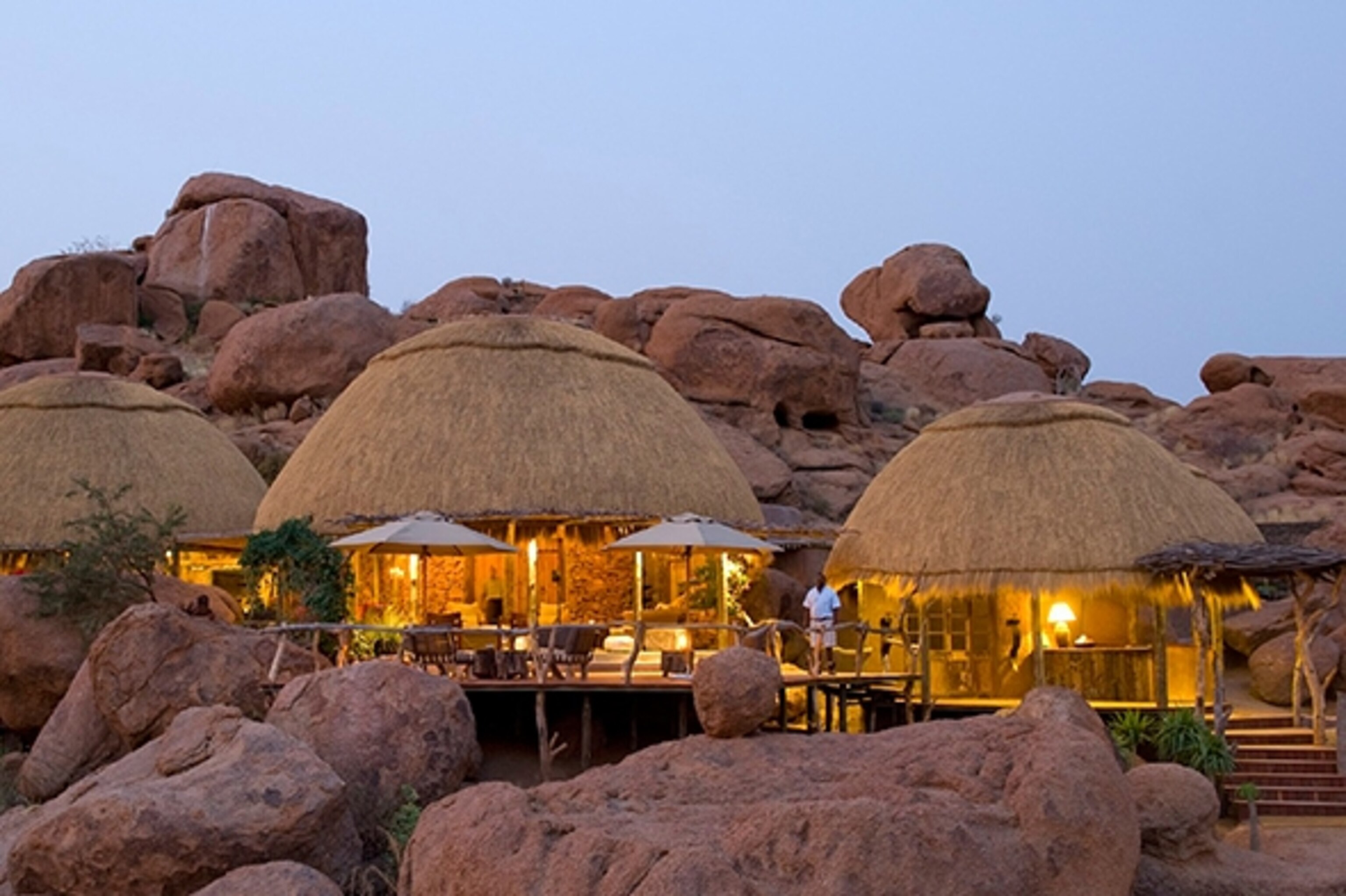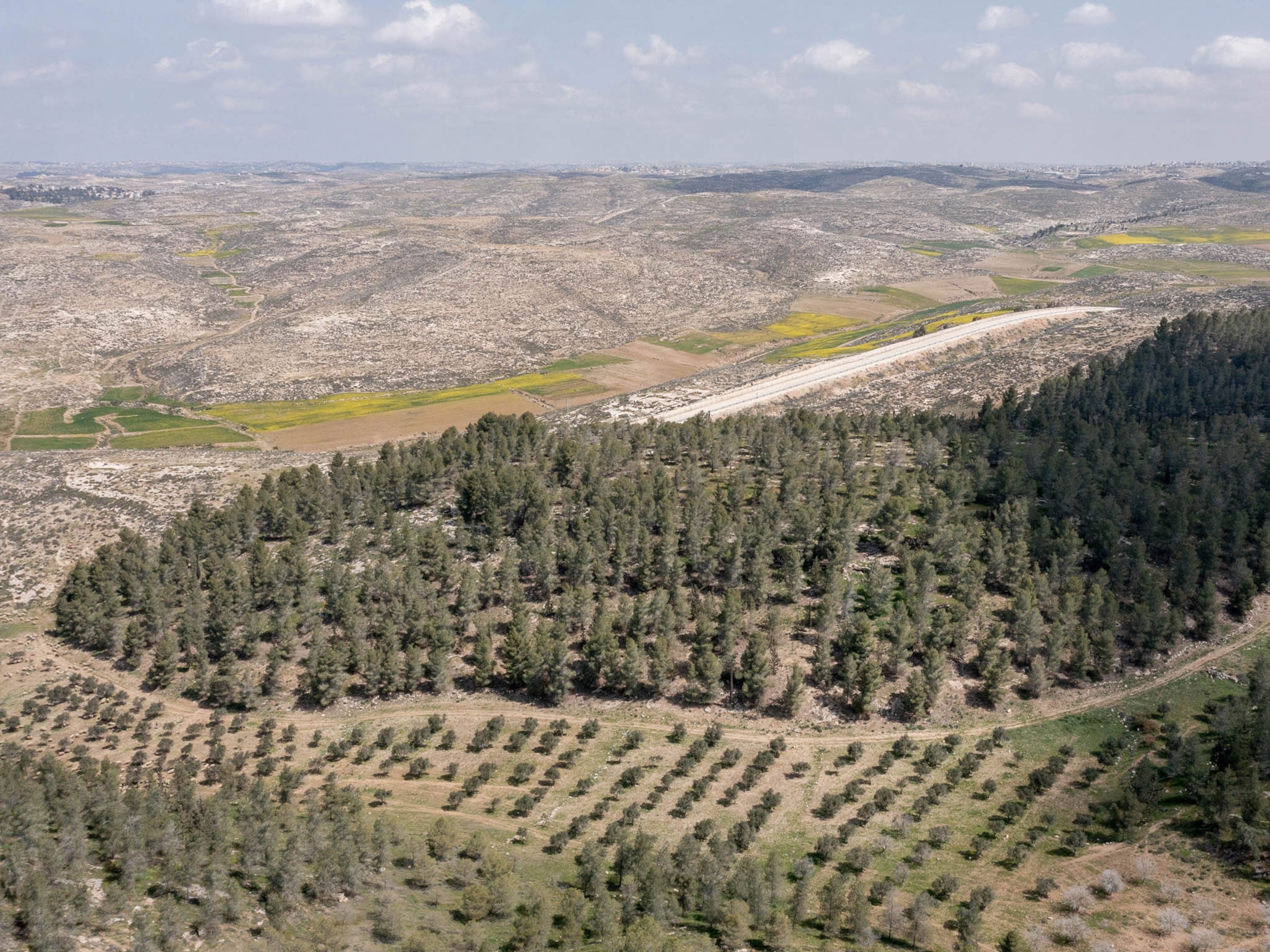
Namibia’s Desert Camps
Namibia‘s desert landscapes present travelers with a symphony of paradox: wide-open spaces and intimate encounters; rugged natural beauty and luxurious accommodations.
Here are three base camps that will set the scene for travel transcendence:
> Camp Kipwe (Damaraland):
Ingeniously built among the giant boulders of a granite kopje, this cluster of igloo-shaped bungalows is close to the petroglyphs carved thousands of years ago by the Khoikhoi people at Twyfelfontein, Namibia’s first World Heritage site. Explore these ancient rock engravings on guided walks. In the mornings, look for elephants as they roam dry riverbeds in search of water.

> Serra Cafema (Kaokoland):
Three hours by light aircraft from Windhoek or via Swakopmund over Namibia’s Skeleton Coast, this tented camp occupies a lush strip of forest along the crocodile-filled Kunene River, which separates Namibia from Angola. Canvas and thatched villas overlook otherworldly desertscapes. A nearby Himba settlement is home to one of Africa’s last seminomadic tribes.

> Okonjima Bush Camp (Near Otjiwarongo):
This collection of thatched African-style chalets sits in a 55,000-acre private wildlife sanctuary. Game drives offer sightings of leopards, giraffes, and more. Guests also can track cheetahs on foot and experience a day in the life of a Bushman. The resident AfriCat Foundation’s wildlife rehabilitation facility helps big cats that have been rescued prepare to live in the wild again.

This piece, reported by Mark Sissons, first appeared in the October 2014 issue of National Geographic Traveler magazine.
> Related:
Related Topics
You May Also Like
Go Further
Animals
- Why this rhino-zebra friendship makes perfect senseWhy this rhino-zebra friendship makes perfect sense
- When did bioluminescence evolve? It’s older than we thought.When did bioluminescence evolve? It’s older than we thought.
- Soy, skim … spider. Are any of these technically milk?Soy, skim … spider. Are any of these technically milk?
- This pristine piece of the Amazon shows nature’s resilienceThis pristine piece of the Amazon shows nature’s resilience
Environment
- This pristine piece of the Amazon shows nature’s resilienceThis pristine piece of the Amazon shows nature’s resilience
- Listen to 30 years of climate change transformed into haunting musicListen to 30 years of climate change transformed into haunting music
- This ancient society tried to stop El Niño—with child sacrificeThis ancient society tried to stop El Niño—with child sacrifice
- U.S. plans to clean its drinking water. What does that mean?U.S. plans to clean its drinking water. What does that mean?
History & Culture
- Gambling is everywhere now. When is that a problem?Gambling is everywhere now. When is that a problem?
- Beauty is pain—at least it was in 17th-century SpainBeauty is pain—at least it was in 17th-century Spain
- The real spies who inspired ‘The Ministry of Ungentlemanly Warfare’The real spies who inspired ‘The Ministry of Ungentlemanly Warfare’
- Heard of Zoroastrianism? The religion still has fervent followersHeard of Zoroastrianism? The religion still has fervent followers
- Strange clues in a Maya temple reveal a fiery political dramaStrange clues in a Maya temple reveal a fiery political drama
Science
- Not an extrovert or introvert? There’s a word for that.Not an extrovert or introvert? There’s a word for that.
- NASA has a plan to clean up space junk—but is going green enough?NASA has a plan to clean up space junk—but is going green enough?
- Soy, skim … spider. Are any of these technically milk?Soy, skim … spider. Are any of these technically milk?
- Can aspirin help protect against colorectal cancers?Can aspirin help protect against colorectal cancers?
- The unexpected health benefits of Ozempic and MounjaroThe unexpected health benefits of Ozempic and Mounjaro
Travel
- What it's like to hike the Camino del Mayab in MexicoWhat it's like to hike the Camino del Mayab in Mexico
- Follow in the footsteps of Robin Hood in Sherwood ForestFollow in the footsteps of Robin Hood in Sherwood Forest
- This chef is taking Indian cuisine in a bold new directionThis chef is taking Indian cuisine in a bold new direction
- On the path of Latin America's greatest wildlife migrationOn the path of Latin America's greatest wildlife migration
- Everything you need to know about Everglades National ParkEverything you need to know about Everglades National Park




